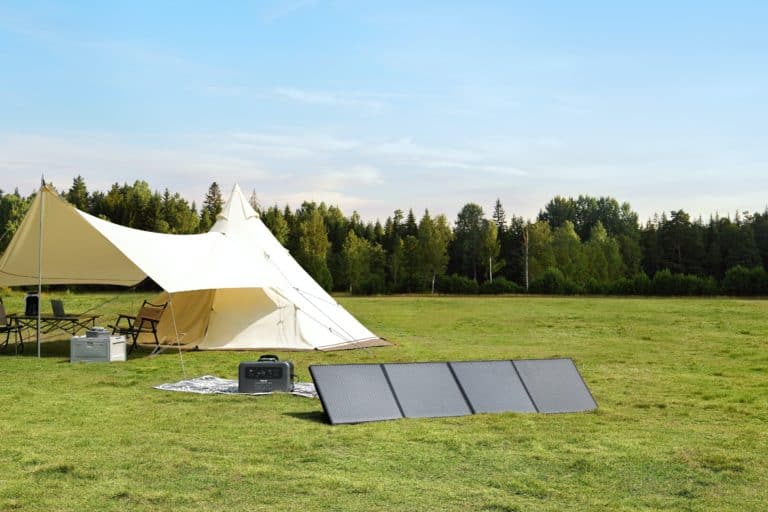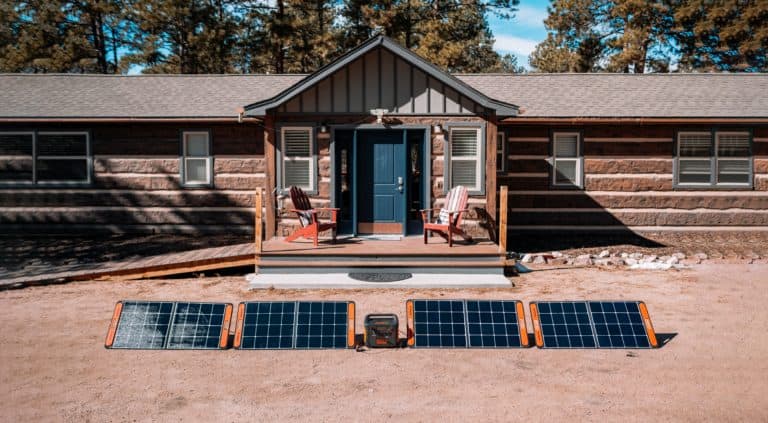Challenges of cultivating eco-friendly habits at home
In our efforts to live more sustainable lives, we often face various barriers. These can be financial, logistical, or even psychological. However, understanding and addressing these barriers eco-friendly is crucial if we want to make lasting change.
In this blog post, we’ll discuss some of the most common obstacles to sustainable living and how you can overcome them.
Content outline
- What are some of the biggest barriers and how to overcome them?
- Why is it important to overcome these barriers?
- How can we make sustainable living more accessible to everyone?
- Summary.
What are some of the biggest barriers to sustainable living?
1. Cost
Eco-friendly home improvements often come with higher upfront costs. This can mean investing in expensive things such as low flow toilets or renewable energy sources like solar panels.
Homeowners may also need to invest in more efficient appliances and updated insulation systems for instance.

Fortunately, there are many ways to reduce the costs associated with sustainability initiatives. For instance, using energy-efficient appliances, such as refrigerators and air conditioners, can help reduce electricity bills while still having access to necessary amenities. Installing LED lighting fixtures can also save money.
2. Limited resources
For those committed to sustainable living, limited resources can present a significant challenge. Although it is often easier and more cost effective to buy products which are not eco-friendly, there are still ways of achieving the same goal with minimal environmental impact.
One of the main challenges when trying to sustainably live in a home with limited resources is finding the right balance between using what you have and purchasing new, more sustainable products.
To get around this, start by assessing your current resources to identify which items can be reused or repurposed, and which need to be replaced with eco-friendly alternatives. This requires a bit of creativity and trial and error but it is certainly possible to find ways around these with a little hard work.
3. Lack of knowledge and awareness
One of the most important steps to overcoming a lack of knowledge and awareness around sustainable living at home is education.

Educating yourself and others on the importance of sustainability, can help increase your understanding of how to live sustainably.
Additionally, there are various resources available online that provide information on how to reduce energy consumption and waste.
4. Inconveniences
Overcoming inconveniences to achieve eco-friendly living at home can be challenging, but it is not impossible.
It takes commitment and dedication to make the necessary lifestyle changes in order to reduce your individual carbon footprint.
Start small by making minor adjustments for everyday activities such as using reusable bags for groceries and replacing traditional light bulbs with energy efficient ones.
5. Habits and behaviours
Our everyday lives are filled with routines, ingrained habits and behaviours, thus making it hard to make significant changes. Fortunately, there are ways that can be taken in order to overcome these obstacles.
Begin to identify the habits and behaviours that are preventing you from achieving a more sustainable lifestyle. Once these have been identified, the next step is to create a plan for making changes.
This may include setting realistic goals and coming up with strategies for achieving them. It is also important to ensure that any changes made are practical and do not disrupt daily routines too much.
6. Government policies and politics
Government policies can either aid or act as a barrier to eco-friendly living at home. This may require careful consideration on the path of the government especially.
Governments play a key role in fostering an environment that encourages sustainability, from taxation incentives for green investments, to subsidies for renewable energy sources.

It is therefore important for governments to provide supportive legislation and policy frameworks that support the transition towards sustainable living.
7. Infrastructure
Creating a green lifestyle at home begins with having the right infrastructure in place. For homeowners and real estate businesses, this means making sure that your potential homes are built, designed and managed to reduce energy consumption, water usage and waste production. It also means incorporating renewable technologies into your daily operations.
One of the first steps towards creating a sustainable living space is assessing the current infrastructure of your home. Conducting an audit can help identify areas where energy is being wasted, such as inefficient insulation or outdated appliances.
Upgrading these items to more efficient versions will reduce energy costs and save on monthly bills. In addition, consider utilising renewable sources of energy.
8. Technological barriers
This challenge is almost similar to the previous one. Technology can play a major role in helping us to achieve sustainable living at home.
However, technological barriers such as cost, availability, and access can present major obstacles to achieving sustainability. To overcome these, it is important to consider the following two strategies:
First, households should invest in cost-effective technologies that can help them reduce their environmental impact. Technologies such as solar panels, energy-efficient appliances, and smart thermostats are relatively inexpensive and can make a big difference when it comes to reducing emissions.
Second, people should be aware of available resources and subsidies that can help them access and afford more sustainable home technologies. For example, many governments offer grants or special loans for those looking to install renewable energy systems such as solar power.
9. Societal norms
Societal norms can be a major challenge to green living at home. As stated previously, many people are accustomed to convenience-driven lifestyles and behaviours that contribute to the depletion of natural resources, resulting in increased greenhouse gas emissions and other environmental impacts.
To overcome all these, people need to become aware of their individual impact on the environment and understand how small changes in their everyday behaviour can create a positive environmental outcome.
This awareness and understanding must be supported by the development of new habits. In addition, broader societal change is required. Governments can be relied upon to provide incentives in this regard if required.
10. Economic systems
Economic systems can pose a problem to eco-friendly living at home, but it is possible to overcome them. Changing consumer behaviour and targeting government policies are two effective strategies for overcoming economic systems as limitations to sustainable living.
Consumers have the power to influence companies by shifting their purchases from unsustainable products and services towards more eco-friendly options.
11. Short-term thinking
Unfortunately, many people find it difficult to make sustainable lifestyle changes due to a “short-term” mindset. Short-term thinking can take the form of focusing on immediate gratification or making decisions without considering the impacts in the future.

To help overcome short-term thinking, it’s important to practise mindful consumption. This means slowing down and asking yourself why you’re buying something before you do.
12. Geographical barriers
The global pandemic has highlighted the need for living sustainably at home. Also, lockdowns and social distancing measures have highlighted the importance of being able to rely on our own resources.
This can be especially challenging for those with limited access to green spaces or other amenities that could enhance their ability to make more eco-friendly decisions.
However, it is possible to overcome geographical barriers to sustainable living and make strides towards a more sustainable lifestyle.
One of the first steps to overcoming geographical obstacles is to identify what resources are available in our local areas. Local green spaces, community gardens, farmer’s markets and urban farms can all provide access to fresh produce as well as the needed opportunities.
13. Misinformation
Misinformation is a major barrier to sustainable living at home. It can lead to confusion and doubt, making it difficult for people to make informed choices when it comes to their living habits.
To overcome this obstacle, individuals should focus on learning more about the different sustainability practices they can employ in their homes. Seeking out reliable sources such as academic journals, governmental websites, and trusted news outlets can help ensure that individuals are making decisions based on accurate information.
Additionally, talking to local professionals about sustainability practices can also be beneficial. Professionals in the field will have a strong understanding of what is most effective in terms of sustainable living. They can provide advice and resources which may not be available elsewhere.
14. Resistance from others
When attempting to live a more sustainable lifestyle, it is often difficult to maintain this commitment when those around us do not share our same values. Resistance from family and friends can be a significant impediment to achieving your sustainability goals.
Understanding how to handle this resistance in an effective manner is key in order to successfully implement sustainable practices into everyday life.
The first step in overcoming resistance from others is to open a dialogue about your sustainability goals and the reasons behind them. This is often best done through respectful communication that highlights the potential benefits of sustainable living.
Sharing success stories or research can also be helpful in demonstrating how transitioning to a more eco-friendly lifestyle can positively influence others.
Additionally, it can be beneficial to focus on persuading rather than forcing and to respect the opinions of those who are not as enthusiastic.
In some cases, it may also be useful to break down your sustainability goals into more manageable steps that others can easily understand and follow. This can help to make sustainable living less intimidating and more achievable.
15. Lack of cooperation and collaboration
In order to overcome the lack of cooperation and collaboration that can be a hindrance to sustainable living at home, it is essential to establish successful communication systems. This may involve both online and offline tools, such as hosting regular meetings or creating digital groups for discussion and idea-sharing.
When engaging in conversations about sustainable living, it is important to be respectful of those who have different opinions. This can help foster an environment where everyone’s ideas and perspectives are heard and valued, while also encouraging collaboration.
In addition to communication systems, it is important to create a shared vision among all members of the household. This should include clear goals and expectations for sustainability.
16. Maintenance culture
Maintenance is an important component of living sustainably at home. Unfortunately, it can sometimes be a deterrent to achieving this goal due to the costs and time involved.
However, there are ways to make maintenance more manageable and ensure that your home is sustainable in the long-term.
First, you should create a regular maintenance schedule to help you stay on track. This should include replacing filters, cleaning or inspecting appliances, and making minor repairs when necessary.
You can also save money in the long-term by inspecting items like insulation, windows, and doors for air leaks that could be causing your energy bills to be high. Additionally, regular maintenance checks can help identify any issues with
Why is it important to overcome these challenges?
Sustainable living is a lifestyle that helps conserve the environment while ensuring our quality of life. It involves making conscientious decisions every day that reduce pollution, save resources and create healthier environments.
Overcoming the challenges of sustainable living is paramount as it enables us to make positive changes that will benefit current and future generations. Sustainable living requires renewable energy sources, less waste, better air quality standards and efficient use of resources to ensure that our world’s natural environment remains healthy for future generations.
It ensures improved health for those in communities affected by unsustainable development and urges consumers to lead lifestyles that minimise their carbon footprint. Investing in sustainable practices now will prevent costly damage in the future, thereby creating an eco-friendly society with stable resources for everyone.
Summary
Eco-friendly living can offer immense benefits to both people and the environment, but can be often out of reach for most. In order to make this kind of lifestyle more accessible, sustainability must be incorporated into everyday decision-making.
Governments, businesses, and individuals all have a role to play – governments should create incentives for companies to invest in sustainable initiatives, as well as enact policies supporting renewable sources of energy
Businesses should invest in public awareness campaigns on sustainability and prioritise sustainable processes.
Finally, individuals should assess their behaviour with regards to how sustainable it is and make changes where appropriate.
Final word!
By taking steps towards making sustainable living more accessible on multiple levels, we can build a better world for everyone.

I’m a researcher, engineer, sustainability advocate and someone with a real passion for sports. If I am not in the laboratory or volunteering for some form of sustainability-driven initiatives, you can find me pretty much on the field either playing sports or watching my favourite teams and sportspersons on the TV. I strongly believe that through collaborative efforts and interdisciplinary approaches, we can create a more sustainable planet for all.
Contact
Have questions or need help? Please use the form to reach out .






